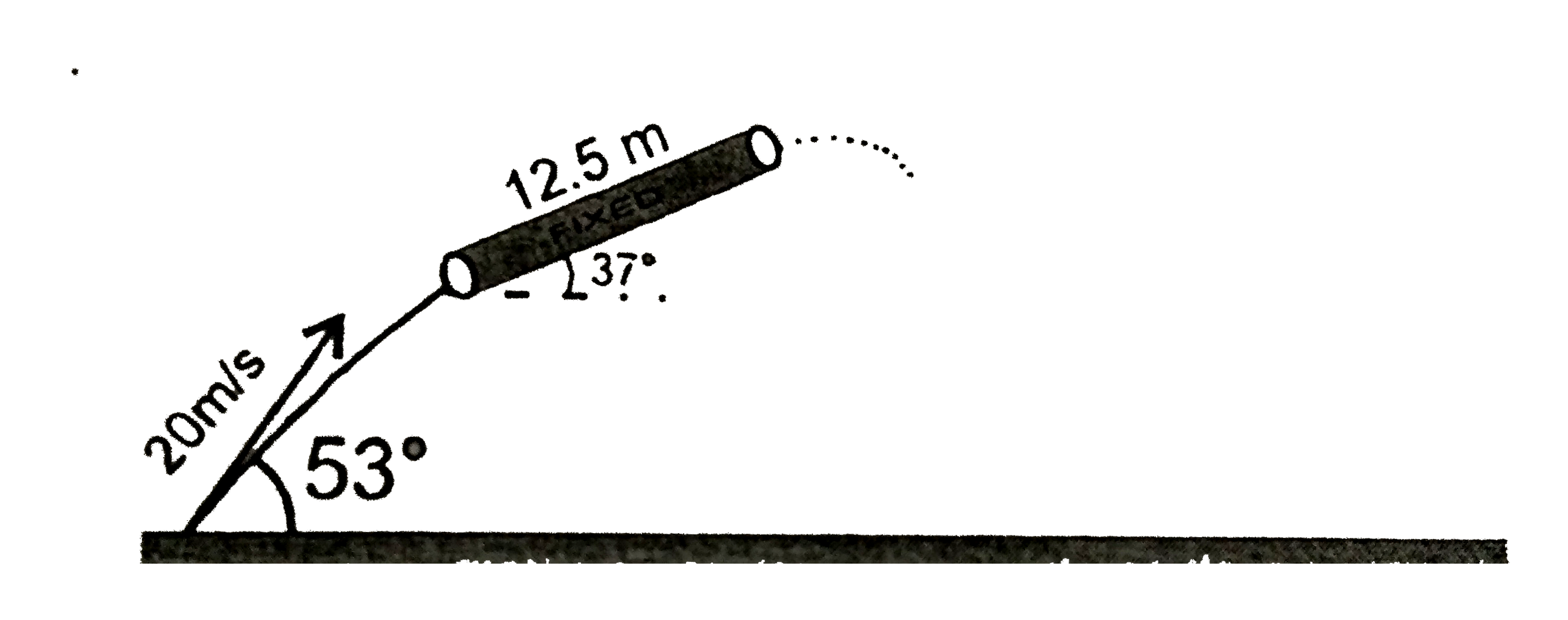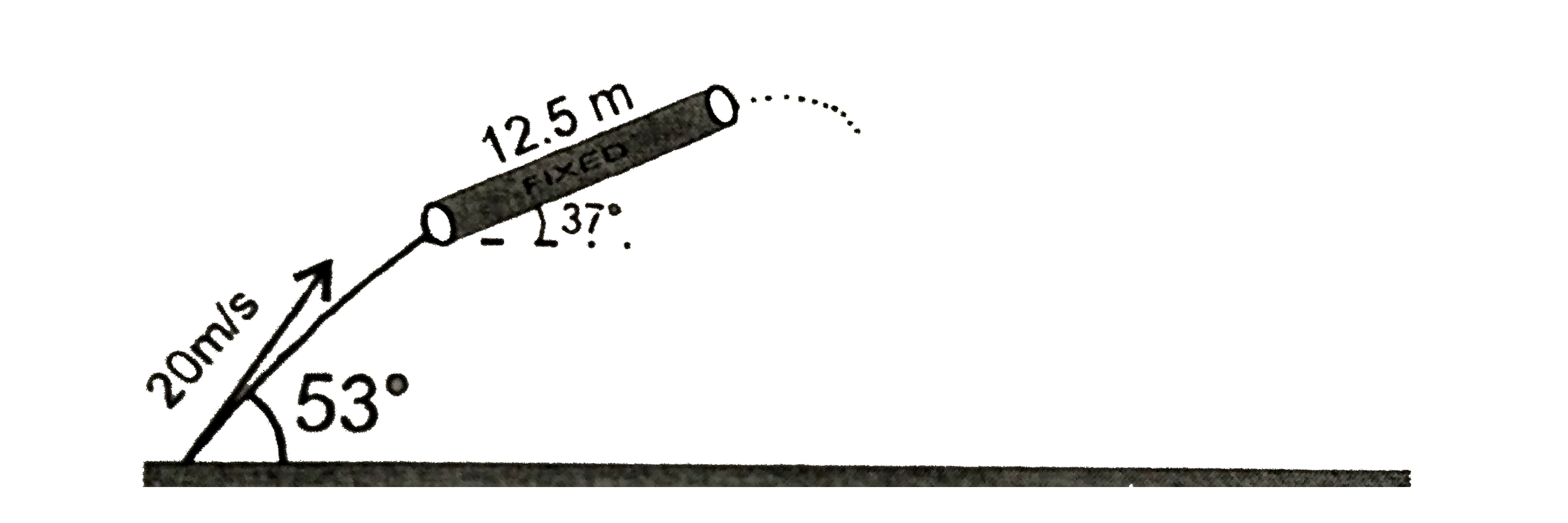A rough horizontal plate rotates with angular velocity ω about a fixed vertical axis. A particle or mass m lies on the plate at a distance 5a4 from this axis. The coefficient of friction between the plate and the particle is 13 . The largest value of ω2 for which the particle will continue to be at rest on the revolving plate is
(a)g3a
(b)4g5a
(c)4g9a
(d)4g15a
The correct Answer is:D
To solve the problem, we need to determine the largest value of ω2 for which the particle will remain at rest on the rotating plate. Here are the steps to arrive at the solution:
Step 1: Identify the Forces Acting on the Particle
The forces acting on the particle are:
- The gravitational force mg acting downward.
- The normal force N acting upward.
- The centrifugal force Fc acting outward, which is given by Fc=mω2r, where r is the distance from the axis of rotation.
Step 2: Set Up the Normal Force
Since the particle is on a horizontal plate and not moving vertically, the normal force N is equal to the gravitational force:
N=mg
Step 3: Determine the Frictional Force
The maximum static frictional force Ff that can act on the particle is given by:
Ff=μN
Substituting for N:
Ff=μmg
Given that the coefficient of friction μ=13, we have:
Ff=13mg
Step 4: Equate the Forces
For the particle to remain at rest on the plate, the frictional force must balance the centrifugal force:
Ff=Fc
Substituting the expressions for the forces:
13mg=mω2r
Step 5: Simplify the Equation
We can cancel m from both sides (assuming m≠0):
13g=ω2r
Step 6: Substitute the Value of r
We are given that r=5a4. Substituting this into the equation:
13g=ω2(5a4)
Step 7: Solve for ω2
Rearranging the equation to solve for ω2:
ω2=g3⋅45a
ω2=4g15a
Final Result
Thus, the largest value of ω2 for which the particle will continue to be at rest on the revolving plate is:
ω2=4g15a
The forces acting on the particle are:
- The gravitational force mg acting downward.
- The normal force N acting upward.
- The centrifugal force Fc acting outward, which is given by Fc=mω2r, where r is the distance from the axis of rotation.
Since the particle is on a horizontal plate and not moving vertically, the normal force N is equal to the gravitational force:
N=mg
The maximum static frictional force Ff that can act on the particle is given by:
Ff=μN
Substituting for N:
Ff=μmg
Given that the coefficient of friction μ=13, we have:
Ff=13mg
For the particle to remain at rest on the plate, the frictional force must balance the centrifugal force:
Ff=Fc
Substituting the expressions for the forces:
13mg=mω2r
We can cancel m from both sides (assuming m≠0):
13g=ω2r
We are given that r=5a4. Substituting this into the equation:
13g=ω2(5a4)
Rearranging the equation to solve for ω2:
ω2=g3⋅45a
ω2=4g15a
Thus, the largest value of ω2 for which the particle will continue to be at rest on the revolving plate is:
ω2=4g15a
Topper's Solved these Questions
- CIRCULAR MOTIONBook:DC PANDEY ENGLISHChapter:CIRCULAR MOTIONExercise:Level 2 More Than One Correct
Explore 5 Videos
- CIRCULAR MOTIONBook:DC PANDEY ENGLISHChapter:CIRCULAR MOTIONExercise:Level 2 Comprehension Based
Explore 5 Videos
- CIRCULAR MOTIONBook:DC PANDEY ENGLISHChapter:CIRCULAR MOTIONExercise:Level 1 Subjective
Explore 13 Videos
- CENTRE OF MASS, LINEAR MOMENTUM AND COLLISIONBook:DC PANDEY ENGLISHChapter:CENTRE OF MASS, LINEAR MOMENTUM AND COLLISIONExercise:Level 2 Subjective
Explore 21 Videos
- COMMUNICATION SYSTEMBook:DC PANDEY ENGLISHChapter:COMMUNICATION SYSTEMExercise:Only One Option is Correct
Explore 27 Videos
Similar Questions
A uniform rod of mass m and length l rotates in a horizontal plane with an angular velocity ω about a vertical axis passing through one end. The tension in the rod at a distance x from the axis is
View SolutionA block is resting on a horizontal plate in the xy plane and the coefficient of friction between block and plate is μ. The plate begins to move with velocity v=bt2 in x direction At what time will the block start sliding on the plate?
View Solution
Knowledge Check
A ring of radius R is rotating with an angular speed ω0 about a horizontal axis. It is placed on a rough horizontal table. The coefficient of kinetic friction is μk. The time after it starts rolling is.
AωoμkR2gBωog2μkRC2ωoRμkgDωoR2μkg
A ring of radius R is first rotated with an angular velocity ω and then carefully placed on a rough horizontal surface. The coefficient of friction between the surface and the ring is μ. Time after which its angular speed is reduced to half is
View SolutionA uniform stick of length l and mass m lies on a smooth table. It rotates with angular velocity ω about an axis perpendicular to the table and through one end of the stick. The angular momentum of the stick about the end is
View SolutionA particle moves move on the rough horizontal ground with some initial velocity V0. If 34 of its kinetic enegry lost due to friction in time t0. The coefficient of friction between the particle and the ground is.
View SolutionA particle of mass 0.1kg is launched at an angle of 53∘ with the horizontal . The particle enters a fixed rough hollow tube whose length is slightly less than 12.5m and which is inclined at an angle of 37∘ with the horizontal as shown in figure. It is known that the velocity of ball when it enters the tube is parallel to the axis of the tube. The coefficient of friction betweent the particle and tube inside the tube is μ=38[ Take g=10m/g2]

The velocity of the particle as it enters the tube is :
View SolutionA particle of mass 0.1kg is launched at an angle of 53∘ with the horizontal . The particle enters a fixed rough hollow tube whose length is slightly less than 12.5m and which is inclined at an angle of 37∘ with the horizontal as shown in figure. It is known that the velocity of ball when it enters the tube is parallel to the axis of the tube. The coefficient of friction betweent the particle and tube inside the tube is μ=38[ Take g=10m/g2]

The kinetic energy of the particle when it comes out of the tube is approximately equal to :
View SolutionA table with smooth horizontal surface is turning at an angular speed ω about its axis. A groove is made on the surface along a radius and a particle is gently placed inside the groove at a distance a from the centre. Find the speed of the speed of the particle as its distance from the centre becomes L.
View SolutionA table with smooth horizontal surface is turning at an angular speed ω about its axis. A groove is made on the surface along a radius and a particle is gently placed inside the groove at a distance a from the centre. Find the speed of the speed of the particle as its distance from teh centre becomes L.
View Solution
